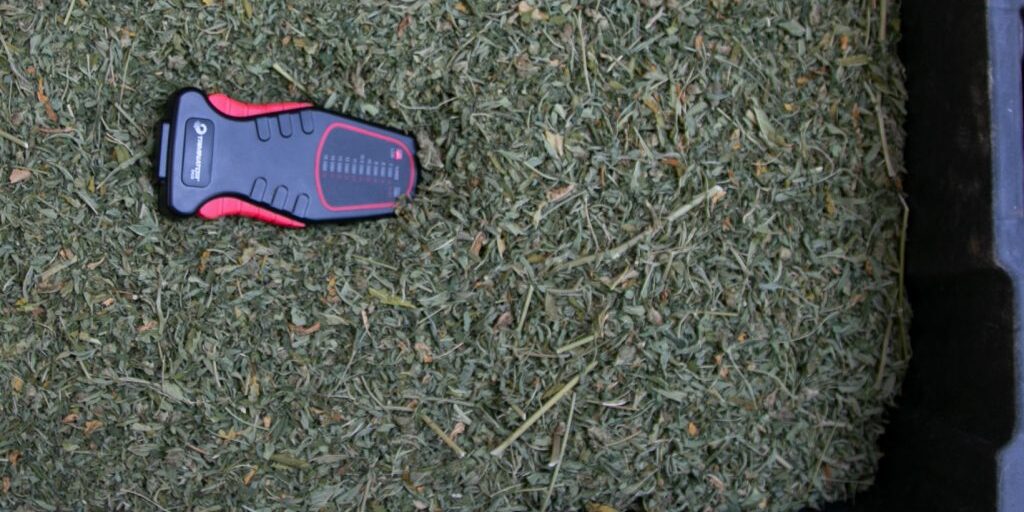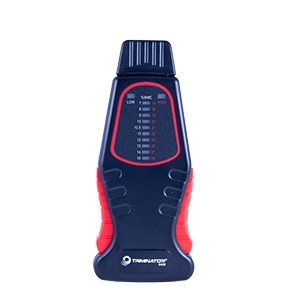State-Mandated Moisture Testing for Cannabis and Hemp

Nobody likes to fail tests — especially not when flunking them costs you thousands of dollars.
Yet failed pathogen tests cost cannabis and hemp growers millions in damages every year. The leading cause of those hot tests? Surprisingly, it’s moisture. Moisture is the root cause of many pathogens.
Microorganisms (like bacteria) and fungi (like mold and mildew) can take hold whenever enough moisture is present. That’s why many states have started testing cannabis and hemp flower for moisture too, not just mold.
This blog explores how states are handling cannabis moisture testing laws, how regulations may develop in new markets, and the difference between “moisture content” and “water activity.” You’ll also find some easy tips that can save you money on (repeated) laboratory testing and even avoid costly failures.
What is Water Activity in Cannabis and Hemp?
When a lab assesses a sample’s moisture, they usually test for the “water activity” of the flower rather than just the “moisture content.” The two terms are related but different.
Water activity (aw) is how much moisture is actively available for pathogens. It’s a measurement of the water that’s free and unbound from the plant material. “Active water” is the H2O that’s not tied up in other molecules.
The importance of aw isn’t unique to cannabis and hemp; it’s important to many food products like bread, cheese, and herbs. When there’s too much unbound water in these products, bacteria and fungi have the breeding ground they need to make people sick.
Moisture content, on the other hand, is the amount of water in a substance as measured by weight. If you have a 100 grams of flower that measures at 10% moisture content, there are 10 grams of water total. It’s a simple measurement.
- The ideal water activity for dried cannabis is 0.55-0.65.
- The ideal moisture content for dried cannabis is around 10%.
Aw is like relative humidity (RH), which is a measurement you understand very well as a cannabis or hemp grower. So, you could basically think of aw as the RH of a porous substance. It’s noted in a similar percentage format, too. An Aw level of 0.65 equates to an RH of 65%.
For more information about the technical aspects of moisture in cannabis and hemp products, check out the cannabis water activity standards developed by the American Society of Testing Materials (ASTM).
How to Test Cannabis and Hemp Moisture Content
Testing for aw requires special equipment that costs thousands of dollars. Instead, if they want a good estimate of their flower’s aw cultivators can test for moisture content.
The “Loss On Drying” Method
One way to find out how much moisture is in a substance is to remove it. It’s a simple method used in many laboratory settings. With this method — descriptively called “Loss On Drying” — you weigh the flower before and after drying it. The difference in weight is lost water.
Here’s how it works:
- Weigh the flower.
- Put it in a low-temperature oven (like 100℉) for several hours. Dry the flower until it’s crispy and can’t lose any additional weight.
- Then, weigh the product again. The lost weight represents the water content.
If your 100-gram batch of cannabis lost 10 grams, it had a 10% water content. Unfortunately, this method removes more than water — it sucks out all the good stuff too. Though they don’t weigh much, the terpenes will be compromised. Unless your customers like a flavorless, dry smoke, the market value of your test sample is kaput.
A Capacitive Moisture Meter for Cannabis
When processing cannabis and hemp with a dry trimmer like the ones we make at Triminator, moisture content makes all the difference. Without a 9-11% moisture level, a dry trimmer will struggle, and results will be subpar.
That’s why we sell the Triminator Cannabis Moisture Meter. It’s a simple, inexpensive meter that helps pace your drying and tells you when it’s time to trim.
Daily testing with a moisture meter can also stop pathogen growth. While drying your crop too fast can compromise quality, drying too slow can lead to disastrous botrytis and mold growth.
If your flowers aren’t losing about 1% of their moisture content a day, you need to increase the temperature of your drying room and/or decrease the humidity.
How the Triminator Moisture Meter works:
- Gently insert the two probes of the meter into your flower.
- Wait for the beep and read the percentage moisture.
- The meter indicates whether the sample is too wet (or too dry).
This simple device can perfect your drying process. It reveals the exact right time to cure your product or send it for testing. It’s much more accurate than the snapped-stem method of the old days (but clearly not a substitute for lab analysis).
How (and Why) to Use a Moisture Meter for Drying
Drying too quickly hurts your product quality because you lose terpenes, cannabinoids, and flavor. Drying too slow, or not drying the flower completely, will make your crop fail state-mandated testing. So use a moisture meter!
When drying, shoot for a 1% moisture drop per day. Keep the room around 40% RH and 60℉, and expect moisture loss to happen faster in the first couple of days after the plants come down. After two to three weeks, your crop should hit that optimal 9-11%.
A simple moisture meter can save you thousands on wasted laboratory tests and may even prevent a pathogen-related crop loss. By knowing your moisture content when you start the curing process, you can be more confident you will pass the aw regulation in your state.
State Regulations for Cannabis and Hemp Moisture Content
If your state doesn’t yet require testing for aw, they will soon. Aw is an important part of keeping consumers safe. When cannabis is legalized on a federal level, expect the FDA to require moisture testing just like it does for herbs and tobacco.
Here’s a sampling of some current state testing regulations. Yours may vary, but the basic requirements are often similar.
Moisture Testing for Cannabis and Hemp in Florida
Testing in Florida can tell us a lot about the importance of moisture testing in other industries. The regulations are vague: medical cannabis needs to be tested for THC and CBD and be “safe for human consumption.”
The Sunshine State does not explicitly require aw testing, but reputable labs are doing it anyway because it’s considered critical for other consumables.
Moisture Testing for Cannabis and Hemp in California
California regulators are infamously zealous, so aw testing should come as no surprise. Flower aw needs to be 0.65 or lower, and the state tests for moisture content too. Moisture levels need to be within a 5-13% range, tested to two significant digits (e.g., 9.5%).
If flower does not pass the test, the batch can be retested after additional drying. Or, if the crop is already contaminated with mold, cultivators can attempt remediation with an ozone treatment and try again.
Moisture Testing for Cannabis and Hemp in Oklahoma
Oklahoma was late to roll out its testing program, but now cultivators must test their product for aw and moisture content before it heads to the dispensary or the extractor. Customers are legally entitled to see the Certificate of Analysis for their products at the dispensary counter.
Moisture Testing for Cannabis and Hemp in Michigan
Michigan requires moisture content and aw testing at an accredited third-party laboratory. And, like other states, they give cultivators a second chance to remediate or dry a crop that doesn’t pass.

Get a Moisture Meter Today
A moisture meter is no substitute for laboratory testing. But knowing your overall moisture content will greatly increase your confidence when your product heads to the lab. Moreover, a moisture meter can increase the quality of your product through a more controlled drying process. It doesn’t need to be a Triminator Moisture Meter, but make sure to add a cannabis-specialized testing instrument to your toolkit soon!
Like what you read?
Get more insider industry knowledge sent right to your inbox
"*" indicates required fields